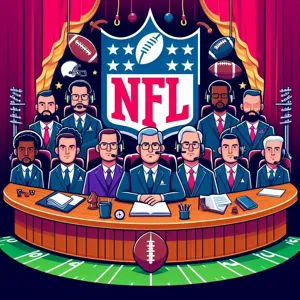For basketball enthusiasts, nothing beats the thrill of hitting the court, whether you’re shooting hoops for fun or competing in a fast-paced tournament.
If you’re looking to elevate your game and connect with fellow players in your community, finding the right local basketball leagues and tournaments is essential. This comprehensive guide is designed to help you navigate the vibrant world of local basketball, from youth leagues fostering the next generation of talent to adult leagues that provide a competitive outlet for seasoned players. Discover tips on where to look for opportunities, how to evaluate different leagues, and the benefits of participating in tournaments that can enhance your skills and build lasting friendships on and off the court. Whether you’re a novice looking to learn the game or a seasoned player aiming to showcase your talent, this guide will empower you to score big in your local basketball scene!
1. Introduction to Local Basketball Leagues and Tournaments

Basketball is more than just a game; it’s a vibrant community where passion meets competition, and friendships are forged on the court. For enthusiasts looking to dive into the thrilling world of local basketball leagues and tournaments, this guide serves as your ultimate companion to scoring big. Whether you’re a seasoned player or just getting started, local leagues offer a fantastic opportunity to improve your skills, meet like-minded individuals, and enjoy the camaraderie that comes from being part of a team.
Local basketball leagues vary widely in terms of organization, skill level, and age groups, catering to everyone from youth players to adults. Many communities host recreational leagues that prioritize fun and inclusion, while others feature more competitive tournaments that can lead to greater recognition and even scholarships for younger athletes. Participating in these leagues not only helps you stay active but also enhances your understanding of the game through real-life experience and exposure to different playing styles.
In this guide, we’ll explore the ins and outs of finding the right local league or tournament for you. We’ll cover key considerations such as assessing your skill level, understanding league formats, and discovering how to register and participate. With the right knowledge and resources at your fingertips, you’ll be well on your way to hitting the court, showcasing your talent, and making unforgettable memories. So lace up your sneakers, grab your basketball, and get ready to embark on an exciting journey through the world of local basketball!
2. Benefits of Joining Local Basketball Leagues
Joining local basketball leagues offers a multitude of benefits that extend far beyond the court. For starters, participating in these leagues provides an excellent opportunity to enhance your basketball skills through regular practice and competition. Whether you’re a seasoned player or a novice, playing against a variety of opponents will challenge you to adapt and improve your game. You’ll find that consistent play allows for the perfect environment to refine your shooting, dribbling, and defensive techniques, ultimately making you a more well-rounded athlete.
Beyond skill development, local basketball leagues foster a sense of community and camaraderie amongst players. Engaging with fellow basketball enthusiasts creates lasting friendships and connections that can enrich your social life. The bonds formed during intense games and shared victories provide a supportive atmosphere where players can encourage one another, celebrate successes, and learn from defeats. This sense of belonging can be particularly rewarding, especially for newcomers to a city or those looking to meet like-minded individuals.
Moreover, these leagues often promote a healthy lifestyle through regular physical activity. Playing basketball not only boosts cardiovascular health but also improves mental well-being by releasing endorphins and reducing stress. It’s a fun way to stay fit, and the competitive spirit can motivate you to push your limits and stay committed to your fitness goals.
Additionally, local leagues often serve as a pathway to more significant opportunities, such as tournaments or showcases. By participating in these leagues, you may catch the attention of coaches, scouts, or even sponsors looking for emerging talent. This could potentially open doors to higher levels of play, whether it be through semi-professional teams or collegiate programs.
In summary, joining local basketball leagues is a multifaceted experience that promotes skill development, community building, physical fitness, and potential opportunities for advancement in the sport. Whether you’re looking to improve your game, meet new friends, or just enjoy the thrill of competition, local leagues are an excellent avenue to score big both on and off the court.
3. How to Identify Your Skill Level

Understanding your skill level is a crucial step in finding the right local basketball leagues and tournaments that suit your playing style and competitive spirit. Before committing to a league, it’s essential to take a moment to assess your strengths and weaknesses on the court. Start by reflecting on your playing experience—how many years have you been playing? Have you participated in organized competitions before? Evaluating your past experiences can provide valuable insight into where you might fit within the local basketball scene.
Next, consider the core skills that define your game. Are you an agile dribbler with a keen eye for making plays, or do you excel in shooting from long distances? Perhaps your defensive skills are your strongest asset. Honest self-assessment is vital; it helps you pinpoint your areas of expertise and those that may need improvement.
If you’re uncertain about your overall skill level, seeking feedback from coaches, teammates, or even more experienced players can be incredibly beneficial. Engage in some pick-up games or casual scrimmages and notice how you stack up against others in informal settings. This can give you a clearer picture of your capabilities and where you might want to challenge yourself.
Lastly, research local leagues and tournaments—many organizations provide skill level classifications, such as recreational, intermediate, and advanced divisions. By matching your skills with the appropriate league, you’ll enhance your chances of having a fulfilling experience, whether that means honing your skills, enjoying friendly competition, or striving for victory. Taking the time to identify your skill level will not only help you find the right league but also ensure that you have a great time on the court!
4. Finding Local Basketball Leagues: Online Resources
In the digital age, finding local basketball leagues and tournaments has never been easier, thanks to a plethora of online resources at your fingertips. Whether you’re a seasoned player looking to get back on the court or a newcomer eager to join the action, harnessing the power of the internet can streamline your search and connect you with the right opportunities.
Start by exploring community websites and social media platforms dedicated to your area. Local Facebook groups, for instance, often serve as bustling hubs where players share information about upcoming leagues, tournaments, and pickup games. Simply typing “basketball leagues near me” into Facebook or joining groups centered around community sports can yield a treasure trove of information.
Additionally, websites like Meetup, TeamSnap, and Eventbrite are invaluable tools for discovering organized basketball events in your vicinity. These platforms allow you to filter events by date, location, and skill level, ensuring you find the perfect match for your playing style. Don’t forget to check out local sports facilities’ websites, as many gyms and community centers host their own leagues and tournaments, often listing upcoming schedules and registration details online.
For those who prefer a more targeted approach, consider specialized sports directories such as USA Basketball or your local Parks and Recreation department’s site. These resources typically provide comprehensive listings of leagues categorized by age group, skill level, and season, making it easy to find the right fit for you.
Lastly, don’t underestimate the power of word-of-mouth. Engaging with fellow players or coaches can lead to valuable insights and recommendations on lesser-known leagues that might not have a strong online presence. By leveraging these online resources and community connections, you’ll be well on your way to scoring big in your local basketball scene.
5. Social Media and Community Groups for Basketball Players

In today’s digital age, social media and community groups have become invaluable resources for basketball enthusiasts looking to connect with local leagues and tournaments. Platforms like Facebook, Instagram, and Twitter not only serve as hubs for sharing highlights and skills but also as platforms for organizing and promoting local basketball events. By joining community groups dedicated to basketball in your area, you can tap into a wealth of information, including upcoming tournaments, team tryouts, and pickup games.
On Facebook, for instance, search for groups that focus on local sports or specifically basketball. These groups often feature posts from organizers seeking players for teams, coaches looking to fill rosters, or even individuals looking for a pickup game. Engaging with posts and interacting with group members can help you quickly establish connections within the community.
Instagram is another powerful tool, as many local leagues and teams share their news and updates through visually engaging content. Follow hashtags relevant to your area, such as #CityNameBasketball, to discover local events and players. You might even find coaches or players posting about open gym sessions or informal training camps, providing excellent opportunities to sharpen your skills while meeting fellow basketball enthusiasts.
Additionally, platforms like Meetup can be a great way to find organized basketball games or leagues. Many organizers post events where players of all skill levels can come together to compete and build camaraderie. Not only does this help you stay active, but it also creates a sense of belonging in your local basketball community.
By leveraging social media and community groups, you can stay informed, connect with fellow players, and ultimately score big when it comes to finding the right basketball leagues and tournaments that suit your skills and aspirations. Whether you’re a seasoned player or just starting out, these platforms can significantly enhance your basketball journey.
6. Local Recreation Centers and Gyms: A Valuable Resource
When it comes to finding local basketball leagues and tournaments, your nearby recreation centers and gyms are invaluable resources. These facilities often serve as the heartbeat of the community’s sports culture, offering not just a place to play, but also a wealth of information about local basketball opportunities.
Step inside a local recreation center, and you’ll likely find bulletin boards plastered with flyers and posters announcing upcoming leagues, tournaments, and open gym times. Many centers host seasonal leagues for various age groups and skill levels, making it easy to find a competitive match or a casual game, depending on your preference. From youth leagues that nurture budding talent to adult leagues for seasoned players looking to maintain their skills, these venues cater to everyone.
Moreover, local gyms, whether they are part of a larger chain or stand-alone facilities, frequently organize tournaments that attract teams from across the region. Participating in these events not only hones your skills on the court but also opens doors to meet fellow basketball enthusiasts and build a network within the local basketball community.
In addition to hosting games, many recreation centers and gyms offer training programs and coaching clinics that can help you elevate your game. Whether you’re a player eager to sharpen your shooting technique, a coach looking to refine your strategies, or even a parent wanting to enroll your child in a skill development camp, these facilities are rich with options.
By taking advantage of the resources available at your local recreation centers and gyms, you can immerse yourself in the vibrant world of basketball in your area. Attend open gym sessions, chat with staff members about upcoming leagues, and connect with fellow players, all while enjoying the camaraderie and passion for the game that these centers foster. In doing so, you’ll not only find opportunities to play but also contribute to the thriving basketball culture in your community.
7. The Role of Schools and Universities in Community Leagues

Schools and universities play a pivotal role in fostering community basketball leagues and tournaments, acting as both facilitators and supporters of local talent. These educational institutions often serve as the heartbeat of their communities, providing not only facilities but also motivation and resources to engage young athletes.
Many schools open their gymnasiums for community use, hosting weekend leagues and summer camps that bring together players of all skill levels. This access to quality courts and equipment can make a world of difference for aspiring basketball players who might not have the means to participate in more expensive leagues. Moreover, schools often have established relationships with local coaches and sports organizations, which can lead to structured training programs and skill development workshops.
Universities, on the other hand, often take this commitment a step further. They may organize larger tournaments that draw participants from surrounding areas, showcasing local talent and providing a platform for players to gain exposure. These events not only highlight the athletes but also foster community spirit, as families and friends gather to support their local teams. Furthermore, college athletes frequently give back by volunteering as coaches or mentors, helping to inspire the next generation of players while honing their own leadership skills.
In addition to promoting participation, schools and universities can also elevate the competitive nature of local leagues. By collaborating with community organizations, they can establish official feeder programs that allow young players to transition smoothly into high school and college basketball, ensuring a steady stream of talent while simultaneously boosting school spirit and attendance at games.
Ultimately, the synergy between educational institutions and community basketball leagues creates a nurturing environment where players can thrive. It not only enhances the overall quality of the sport but also builds lasting relationships among players, coaches, and the community at large. So whether you’re a parent looking to enroll your child in a league, a young athlete eager to showcase your skills, or simply a fan of the game, recognizing and supporting the role of schools and universities can lead to a richer, more dynamic basketball experience.
8. Tips for Evaluating and Choosing the Right League
Choosing the right basketball league can be a pivotal decision for players looking to hone their skills, improve their game, and enjoy the camaraderie of teammates. Here are some essential tips to help you evaluate and select the league that best fits your needs and aspirations.
**1. Understand Your Goals:** Before diving into the selection process, take a moment to clarify what you hope to achieve by joining a league. Are you looking to compete at a higher level, make new friends, or simply stay active? Your objectives will guide your choice, whether it’s a recreational league or a more competitive environment.
**2. Assess the League’s Structure:** Different leagues have varying structures, including age divisions, skill levels, and time commitments. Research each league’s organization to find one that aligns with your playing experience and availability. Some leagues may offer flexible scheduling, while others may require a more substantial commitment.
**3. Check the Reputation:** A league’s reputation can often speak volumes about the experience it provides. Look for reviews and testimonials from current or past players. Engaging with local basketball communities, either online or in person, can provide insights into which leagues are respected and valued by participants.
**4. Evaluate the Facilities:** The quality of the venues where games and practices are held can greatly affect your experience. Visit the facilities, if possible, to ensure they are well-maintained, safe, and conducive to enjoyable gameplay. Consider factors such as court conditions, locker rooms, and overall accessibility.
**5. Review the Competition Level:** Understanding the skill level of participants is crucial for ensuring a fulfilling experience. If you’re a beginner, joining a league with seasoned players may lead to frustration. Conversely, advanced players may find a recreational league lacking in challenge. Many leagues offer tryouts or showcase games, which can give you a taste of the competition.
**6. Consider League rules and Regulations:** Each league may have its own set of rules, including regulations on game play, player conduct, and team composition. Familiarize yourself with these rules to ensure they align with your expectations and comfort level.
**7. Engage with League Organizers:** Don’t hesitate to reach out to league coordinators or organizers with any questions or concerns. A responsive and approachable administration can significantly enhance your overall experience. They should be eager to provide information and assistance in your decision-making process.
**8. Factor in Costs:** Finally, consider the financial aspect of joining a league. Registration fees, uniform costs, travel expenses, and additional fees for tournaments can add up. Ensure you choose a league that fits your budget while still offering a quality basketball experience.
By taking the time to evaluate these factors, you can confidently choose a basketball league that aligns with your skills, goals, and interests, ensuring a rewarding and enjoyable season on the court. Whether you’re shooting hoops for fun or aiming for competition, the right league can make all the difference in your basketball journey.
9. Understanding League Formats and Tournament Structures
When diving into the world of local basketball leagues and tournaments, it’s crucial to familiarize yourself with the various league formats and tournament structures that exist. This knowledge will not only help you choose the right competition for your skill level and goals but also prepare you for the unique challenges each format presents.
Most leagues operate in one of two primary formats: recreational or competitive. Recreational leagues often emphasize fun, inclusivity, and skill development, making them ideal for beginners or those looking to enjoy the game without the pressure of intense competition. Matches in these leagues may have relaxed rules and a focus on sportsmanship, allowing players to develop their talents at a comfortable pace.
On the other hand, competitive leagues demand a higher level of skill and commitment. These leagues typically feature more rigorous schedules, with teams competing against others of similar skill levels. Understanding the expectations of competitive play—such as practice commitments, travel requirements, and player eligibility—will help you gauge whether this setting aligns with your basketball aspirations.
Tournaments, meanwhile, can vary significantly in structure. Some may follow a single-elimination format, where teams play until they lose, making each game crucial. Others, like round-robin tournaments, allow teams to play multiple games against different opponents, providing each team with the opportunity to showcase their abilities and build camaraderie. Additionally, some tournaments may incorporate a seeding system based on previous performances, influencing matchups and determining which teams advance.
By grasping these league formats and tournament structures, you’ll be better equipped to navigate the local basketball scene. This understanding will not only enhance your experience on the court but also foster a deeper appreciation for the sport and the community it builds. Whether you’re aiming to join a recreational league for fun or challenge yourself in a competitive tournament, knowing the ins and outs of these formats will help you score big on and off the court.
10. Registration Process: What You Need to Know
Navigating the registration process for local basketball leagues and tournaments can feel overwhelming, especially for newcomers. However, understanding the ins and outs of registration will ensure a smooth entry into the world of competitive basketball.
First and foremost, familiarize yourself with the specific requirements for the league or tournament you’re interested in. Most organizations will have a dedicated website where you can find all the necessary information regarding age divisions, team composition, and eligibility criteria. Take the time to read through these details carefully, as each league may have unique rules and regulations.
Once you’ve gathered this information, the next step is to prepare the required documents. This often includes proof of age, such as a birth certificate or school identification, and sometimes a signed waiver or acknowledgment of the league’s rules. Ensure these documents are in order, as incomplete submissions can delay your registration or even disqualify your team.
The actual registration can vary from league to league. Many local leagues now offer online registration, which can be a quick and convenient option. Simply fill out the online form, upload your documents, and make the necessary payment through a secure portal. Keep an eye on registration deadlines; some leagues fill up quickly, and missing the cut-off can mean waiting until next season to join the fun.
For those who prefer a more personal touch, in-person registration days are often held. This is a great opportunity to meet league organizers, ask questions, and get a feel for the community before jumping in. Bring all the required documents and payment methods, as on-the-spot registrations may be available.
Lastly, once registered, make sure to check your email regularly for updates from the league about practice schedules, game times, and any other important announcements. Staying informed will not only help you prepare for the season but also enhance your overall experience as part of the basketball community.
With these tips in mind, you’ll be well-equipped to tackle the registration process and get ready to hit the court with your new team. Whether you’re looking to compete at a recreational level or aiming for more serious tournaments, understanding the registration process is the first step in scoring big in your local basketball scene.
11. Preparing for Tryouts and Assessments
Preparing for tryouts and assessments is a crucial step in securing your spot on a local basketball team or entering a tournament. This phase can be both exhilarating and nerve-wracking, but with the right preparation, you can set yourself up for success.
Start by familiarizing yourself with the specific requirements of the league or team you’re auditioning for. Each organization may have different expectations regarding skill levels, positions, and conditioning. Review any provided materials or reach out to coaches for insights into what they’re looking for. Understanding the format of the tryouts—whether they include drills, scrimmages, or skills assessments—will help you tailor your practice sessions accordingly.
Physical preparation is key. Make sure that you’re in optimal shape by following a structured training regimen leading up to the day. Focus on cardiovascular fitness, agility drills, and strength training to enhance your performance on the court. Additionally, don’t neglect your basketball fundamentals. Spend time refining your shooting technique, ball handling, passing accuracy, and defensive skills. Practicing with friends or during open gym sessions can also help simulate game-like scenarios, putting your skills to the test.
Mental preparation should not be overlooked. Visualize your performance, focusing on executing skills confidently and effectively. Develop a pre-tryout routine that helps calm your nerves—this could involve breathing exercises, listening to motivating music, or even positive self-talk. Remember that tryouts are not just about showcasing your current abilities, but also about demonstrating your potential and willingness to learn.
Lastly, don’t forget the importance of sportsmanship and teamwork. Coaches are not only looking for skilled players but also individuals who can communicate and collaborate effectively with their teammates. Displaying a positive attitude and a strong work ethic during tryouts can leave a lasting impression, increasing your chances of making the team. With thorough preparation and a focused mindset, you’ll be well-equipped to shine during your tryouts and assessments, setting the stage for a successful basketball journey.
12. Building a Network: Connecting with Other Players
Building a network by connecting with other players is a vital step in your journey through local basketball leagues and tournaments. Basketball is more than just a game; it’s a community—one that thrives on relationships, camaraderie, and shared passion. When you take the time to forge connections with fellow players, you open the door to a wealth of opportunities that can enhance both your skills and your experience on the court.
Start by attending local pickup games or practices in your area. These informal sessions are fantastic for meeting players of varying skill levels and backgrounds. Engage in conversations, introduce yourself, and share your basketball journey. You never know who might be looking for a teammate, a practice partner, or just a friend who shares your love for the game.
Social media platforms and community forums can also be invaluable for expanding your network. Join local basketball groups on platforms like Facebook or Reddit, where you can find discussions about upcoming leagues, tournaments, and events. Post about your interest in joining a league or forming a team, and you may attract like-minded players who share your goals.
Don’t overlook the power of word-of-mouth. Talk to friends, family, and acquaintances about your basketball interests. They might have connections to local players or teams, or even know of available leagues that you haven’t discovered yet.
Lastly, consider attending local basketball events, such as tournaments or exhibitions. These gatherings not only allow you to watch and learn from more experienced players but also provide excellent networking opportunities. Bring along some business cards or simply be ready to exchange contact information with those you meet.
By actively building relationships with other players, you’ll not only enhance your basketball skills but also enrich your overall experience. A strong network can lead to new playing opportunities, helpful tips, and even lifelong friendships—making your time in local basketball leagues truly rewarding.
13. Essential Gear and Equipment for Local Basketball
When it comes to participating in local basketball leagues and tournaments, having the right gear and equipment can significantly enhance your performance and enjoyment of the game. Below is a rundown of the essential items every player should have in their arsenal, whether you’re a seasoned athlete or just starting out on the court.
**1. Basketball Shoes:** A quality pair of basketball shoes is perhaps the most critical investment for any player. Look for shoes that provide excellent ankle support, cushioning, and grip. The right shoes not only improve your performance but also help prevent injuries during those quick cuts and jumps.
**2. Basketball:** While most leagues provide a basketball for games, having your own is essential for practice. Choose a basketball that’s the appropriate size for your age and gender—typically a size 7 for men and size 6 for women. Investing in a durable, high-quality ball will ensure you get the most out of your practice sessions.
**3. Athletic Apparel:** Comfortable, moisture-wicking clothing is key to keeping you cool and dry during intense games. Look for breathable jerseys, shorts, and compression gear that allow for freedom of movement. Additionally, don’t forget to wear a supportive sports bra if you’re a woman player.
**4. Training Aids:** Consider incorporating training aids into your practice routine. Items like dribbling goggles can help improve your ball-handling skills without compromising your vision, while agility ladders can enhance your footwork and speed on the court.
**5. Water Bottle:** Staying hydrated is crucial for optimal performance, especially during long games or tournaments. Keep a reusable water bottle handy to replenish your fluids and keep your energy levels up throughout the day.
**6. Knee and Ankle Supports:** If you have a history of joint issues or are concerned about injuries, knee and ankle braces can provide additional support and stability. These protective gears can help you play with confidence, knowing you have that extra layer of safety.
**7. Basketball Socks:** Specialized basketball socks provide extra cushioning and moisture-wicking properties to keep your feet comfortable during games. Look for socks with arch support and reinforced areas for added durability.
**8. Bag for Gear:** Finally, a sturdy bag to carry all your gear is essential. Opt for one with compartments to keep your shoes separate from your clothes and other equipment, making it easier to stay organized and ready for the next game.
Having the right gear and equipment not only enhances your performance but also adds to the overall experience of playing basketball. Investing in these essentials will ensure you’re well-prepared to hit the court and make the most of every opportunity to showcase your skills in local leagues and tournaments. So gear up and get ready to score big!
14. Balancing Competition and Fun: Setting Personal Goals
When it comes to joining local basketball leagues and tournaments, finding the right balance between competition and enjoyment is essential for a fulfilling experience. Setting personal goals not only enhances your skills but also keeps the spirit of the game alive. Whether you’re a seasoned player or just starting out, having clear objectives can guide your progress and maintain your enthusiasm.
Begin by reflecting on what you hope to achieve through your participation. Are you aiming to improve your shooting accuracy, enhance your teamwork skills, or simply enjoy the thrill of the game? Setting specific, measurable goals—like increasing your free throw percentage by 10% over the season or making a certain number of assists per game—can provide a tangible focus for your training and performance.
However, it’s equally important to remember that basketball is, at its core, a game meant to be enjoyed. While striving for personal excellence, don’t lose sight of the camaraderie and friendships that blossom on the court. Aim to foster a positive mindset, celebrating your achievements, no matter how small, and embracing the learning opportunities that come from setbacks.
Consider setting goals that combine both aspects: perhaps you want to develop a stronger rapport with your teammates while also working on your individual skills. By doing so, you not only enhance your game but also contribute to a more enjoyable and cohesive team atmosphere.
Ultimately, balancing competition with fun will not only improve your performance but also ensure that your love for the game continues to flourish, making every dribble, pass, and shot a rewarding step in your basketball journey.
15. Conclusion: Embracing the Local Basketball Community
As we wrap up this comprehensive guide to finding local basketball leagues and tournaments, it’s essential to reflect on the broader significance of immersing yourself in the local basketball community. Joining a league or participating in tournaments is more than just playing the game; it’s about forging connections, sharing experiences, and cultivating a love for basketball that goes beyond the court.
Embracing the local basketball scene can open up a world of opportunities. You’ll find not only a chance to improve your skills and stay active but also the camaraderie that comes from being part of a team. Whether you’re a seasoned player or just starting, the local community is filled with individuals who share your passion and enthusiasm for the game.
Moreover, engaging with fellow players can lead to lifelong friendships and a network of support that extends both on and off the court. From organized games to informal pick-up matches at the neighborhood park, each interaction contributes to a sense of belonging and shared purpose.
As you step into this vibrant community, remember that every dribble, every pass, and every basket scored is an opportunity to connect with others who share your love for the sport. So, don your jersey, lace up your sneakers, and get ready to embrace the local basketball community. Your journey awaits, filled with excitement, challenge, and the thrill of the game!
In conclusion, finding local basketball leagues and tournaments is not just about honing your skills on the court; it’s about building connections, fostering teamwork, and immersing yourself in the vibrant basketball community. By following the steps outlined in this guide—from researching local organizations and utilizing social media to visiting community centers and attending games—you’ll be well on your way to scoring big both in competition and camaraderie. So lace up your sneakers, grab your basketball, and step into the thrilling world of local hoops. Whether you’re a seasoned player or just starting out, the court is waiting for you to make your mark. Get out there, have fun, and let the games begin!
















